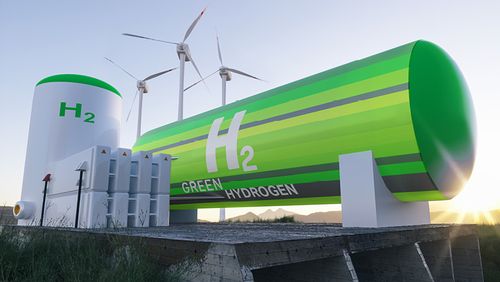Vast Energy, the Australia-based and NASDAQ-listed concentrated solar power (CSP) developer and fuels producer, is in the early stages of developing a project near El Paso, Texas – the company’s first in the US – and is seeking US development partners to generate a pipeline of projects throughout the country, CEO Craig Wood said in an interview.
Vast is in process with two projects in Port Augusta, South Australia: VS1, a 30 MW solar/8 MWh storage plant, and SM1, a demonstration solar-to-methanol plant co-located with VS1, producing up to 7,500 mtpa of green methanol from VS1 electricity and heat with extra power available on the grid.
VS1 is scheduled for FID in 3Q24 with FID on SM1 coming the following quarter, Wood said.
Vast recently announced funding agreements with German partner Mabanaft for up to AUD $40m for SM1, after the SM1 project was selected last year as a part of the German-Australian Hydrogen Innovation and Technology Incubator (HyGATE).
Methanol from the $80m SM1 will in part be exported to Germany. Vast is also working with EDF to provide additional financing, Wood said.
“Essentially it’s going to be debt free and on balance sheet,” Wood said.
German container shipping company Hapag-Lloyd recently signed an MOU with Mabanaft to explore options for the supply of ammonia as bunker fuel to Hapag-Lloyd in the Port of Houston.
US opportunity
In the US, where Vast listed to be primed for opportunistic growth, the company has a shortlist of locations around El Paso, has engaged with regional economic development leaders, and held early talks with EPC providers, Wood said.
The El Paso project is being developed in conjunction with Houston-based oil and gas drilling business Nabors Industries, Wood said. Nabors backed the SPAC that took Vast public at a valuation of up to $586m in early 2023. Its current market cap is $64m.
There are ongoing discussions on whether to produce eSAF or methanol in El Paso, Wood said.
To produce eSAF, Vast would use a solid-oxide electrolyzer coupled with the Fischer-Tropsch process, Wood said. Meanwhile, the methanol distillation process lends itself well to Vast’s ability to produce low-cost heat.
CSP has a lower level of embedded carbon than any renewables technology other than wind, Wood said.
“The work that we have done to date indicated that you would most likely power an eFuels project with a CSP plant that was configured to operate in the day and night,” Wood said.
Preliminary offtake for the El Paso project is going to be critical for attracting investment, Wood said. Offtake will depend on the type of fuel produced, though conversations are ongoing with shipping companies (methanol) and airlines (eSAF).
“We’re not expecting to have any problem placing the product,” Wood said. Offtake would likely be targeted for the Port of Los Angeles, LAX airport, the ports of the Gulf Coast, or Dallas Fort Worth International Airport.
Development of CSP makes sense anywhere climate is sunny and hot, Wood said. The company could logically expand into more of West Texas, New Mexico, Arizona and southern California.
The region around Farmington, New Mexico is particularly attractive for CSP development, Wood said. As a huge amount of coal-fired capacity in that area is retired, those interconnections, workforces and resources are ripe for repowering.
The turbines that one of those coal fired power stations would have is the same turbine at the core of Vast’s technology, Wood said. One difference is that Vast’s can be turned on and off quickly.
Development partnerships
There is an opportunity for Vast to find a development partner, or partners, to stand up a pipeline of projects in two to three years’ time, Wood said.
“Almost everyone wants to wait until our project in Port Augusta reaches COD,” Wood said. “But we don’t want to wait that long to be developing projects in the US.”
Vast is capable of building CSP plants, which can be configured to operate in the day and night, co-located with existing larger-scale solar pv to provide additional generation and, critically, storage, Wood said. By directing sunlight to receivers and heating molten salt, CSP can store energy for 12-to-20 hours overnight to alleviate solar pv’s intermittency issues.
“Coming along and essentially retrofitting complementary CSP next to those [pv plants], we think is a very sensible way to go, both in terms of shared cost but also in terms of managing incremental transmission build,” Wood said. “We’re looking for people we can have conversations with.”







